#1044 A Double Conjunction Eclipse April 28, 1998
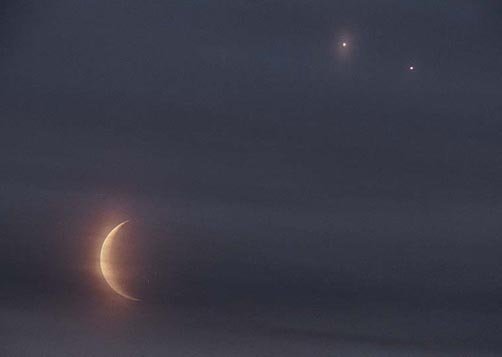
“The crescent Moon, Venus, and Jupiter all appeared together in the early morning hours of April 23rd. Some locations on Earth were able to witness a rare double conjunction eclipse, where the Moon occulted both Jupiter and Venus at the same time. The next double conjunction eclipse will involve Mercury and Mars and will occur on February 13, 2056."
Copyright: S. Barnes
#1045 Tornadoes on the Sun April 29, 1998
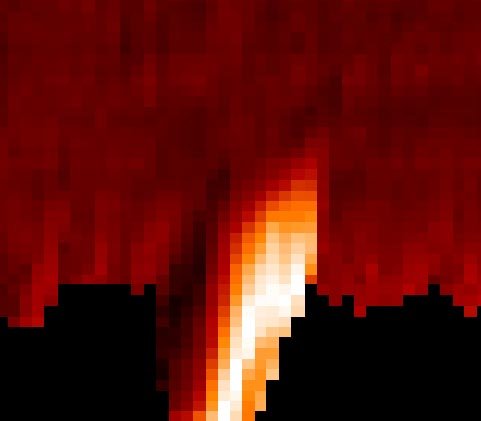
“Giant spinning clouds of gas, similar to Earth's tornadoes, have been found on the Sun. Solar tornadoes, however, can be larger than the entire Earth, and sustain wind gusts over 1000 times stronger than their Earth counterparts. The SOHO spacecraft has found that solar tornadoes start low in the Sun's atmosphere and spiral outwards, gathering speed as they enter the Solar System. Earthlings have more to fear from Earth's own weather phenomena, though, because the high speed particles that result from solar tornadoes are easily stopped by the Earth's thick atmosphere. Earthlings may have much to learn from solar tornadoes, including details of how the solar wind and corona are powered, and how to better predict future solar particle storms that could damage sensitive satellites."
Copyright: Public domain
#1046 Mars: Big Crater in Stereo April 30, 1998
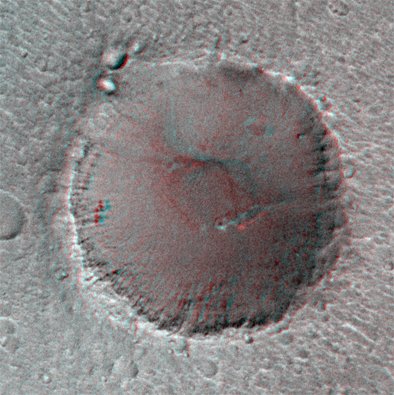
“Get out your red/blue glasses and check out this stereo picture of "Big Crater" on Mars! (Pieces of red and blue or green clear plastic will do. Your right eye should look through the red piece.) The stereo perspective was created by combining images from the Mars Global Surveyor spacecraft taken on two different orbits, each with a slightly different viewing angle. At just under a mile in diameter, Big Crater is not all that big but it is an important landmark in the vicinity of the Mars Pathfinder landing site on an ancient flood plain in Ares Vallis. Identifying corresponding smaller scale features in Pathfinder and Surveyor images will help to precisely locate the lander. Meanwhile, the line of sight between the Earth and Mars is approaching the Sun. During this period, known as solar conjunction, communicating with Mars Global Surveyor will be difficult."
Copyright: Public domain
#1047 Venus: Just Passing By May 01, 1998
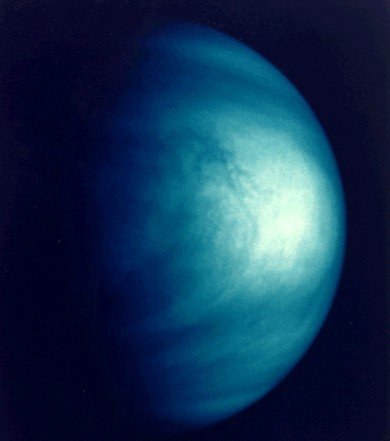
“Venus, the second closest planet to the Sun, is a popular way-point for spacecraft headed for the gas giant planets in the outer reaches of the solar system. Why visit Venus first? Using a " gravity assist " maneuver, spacecraft can swing by planets and gain energy during their brief encounter saving fuel for use at the end of their long interplanetary voyage. This colorized image of Venus was recorded by the Jupiter-bound Galileo spacecraft shortly after its gravity assist flyby of Venus in February of 1990. Galileo's glimpse of the veiled planet shows structure in swirling sulfuric acid clouds. The bright area is sunlight glinting off the upper cloud deck. The Saturn-bound Cassini spacecraft just completed its own flyby of Venus on April 26. Launched in October of 1997, Cassini should reach Saturn in July 2004."
Copyright: Public domain
#1048 The Frothy Milky Way May 02, 1998
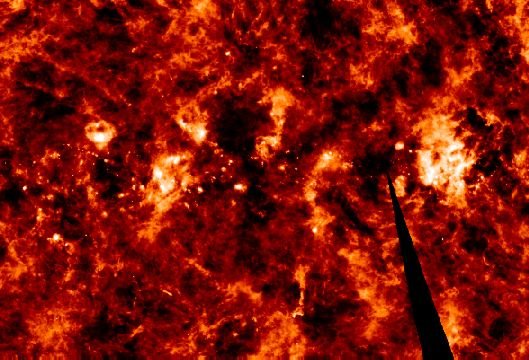
“Astronomers have discovered that looking at dust along the plane of our Milky Way Galaxy is a bit like looking into a frothy glass of beer. The dust between stars in our galaxy appears to be arranged like a foam with bubbles and voids -- churned by shocks and winds generated as stars cycle through their lives. This processed infrared image, based on data from NASA's IRAS satellite, maps the radiation from the edges of galactic dust clouds and reveals the complex distribution. The image covers an area of about 40x60 degrees centered on the galactic plane near the Cygnus region. It shows bright bubble-shaped and arc-like dust clouds around the supernova remnants and starbirth regions embedded in the galactic disk."
Copyright: Public domain
#1049 Standing on the Moon May 03, 1998
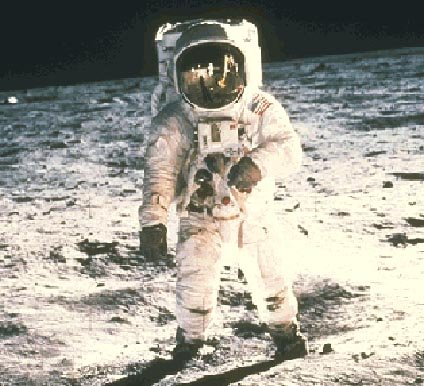
“Humans once walked on the Moon. Pictured above is the second person to stand on the lunar surface: Edwin "Buzz" Aldrin. During this Apollo 11 mission, Neil Armstrong (the first person to walk on the moon) and Buzz Aldrin landed on the Moon while Michael Collins circled in the Command Module above. The lunar team erected a plaque on the surface that reads: HERE MEN FROM THE PLANET EARTH FIRST SET FOOT UPON THE MOON JULY 1969 A.D. WE CAME IN PEACE FOR ALL MANKIND. The Apollo missions demonstrated that it is possible to land humans on the Moon and return them safely."
Copyright: Public domain
#1050 M57: The Ring Nebula May 04, 1998
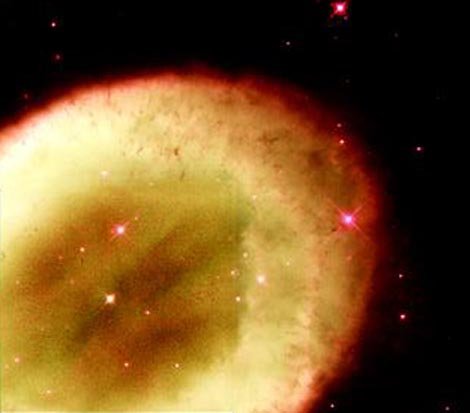
“It looked like a ring on the sky. Hundreds of years ago astronomers noticed a nebula with a most unusual shape. Now known as M57 or NGC 6720, the gas cloud became popularly known as the Ring Nebula. It is now know to be a planetary nebula, a gas cloud emitted at the end of a Sun-like star's existence. As one of the brightest planetary nebula on the sky, the Ring Nebula can be seen with a small telescope in the constellation of Lyra. The Ring Nebula lies about 4000 light years away, and is roughly 500 times the diameter of our Solar System. In this recent picture by the Hubble Space Telescope, dust filaments and globules are visible far from the central star. This helps indicate that the Ring Nebula is not spherical, but cylindrical. Perhaps the Ring Nebula would appear differently if viewed sideways."
Copyright: Public domain
Upvote! Resteem! Comment! As you like it! Thank you for attention!